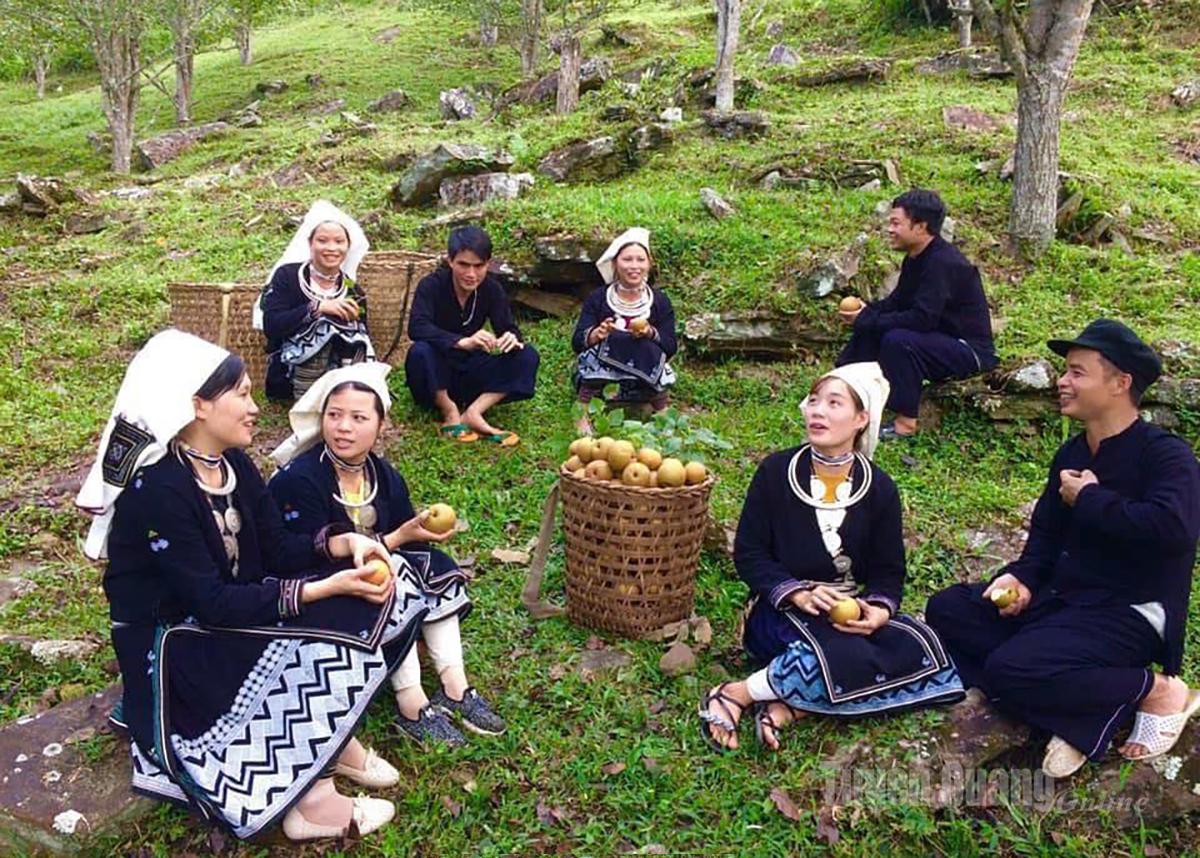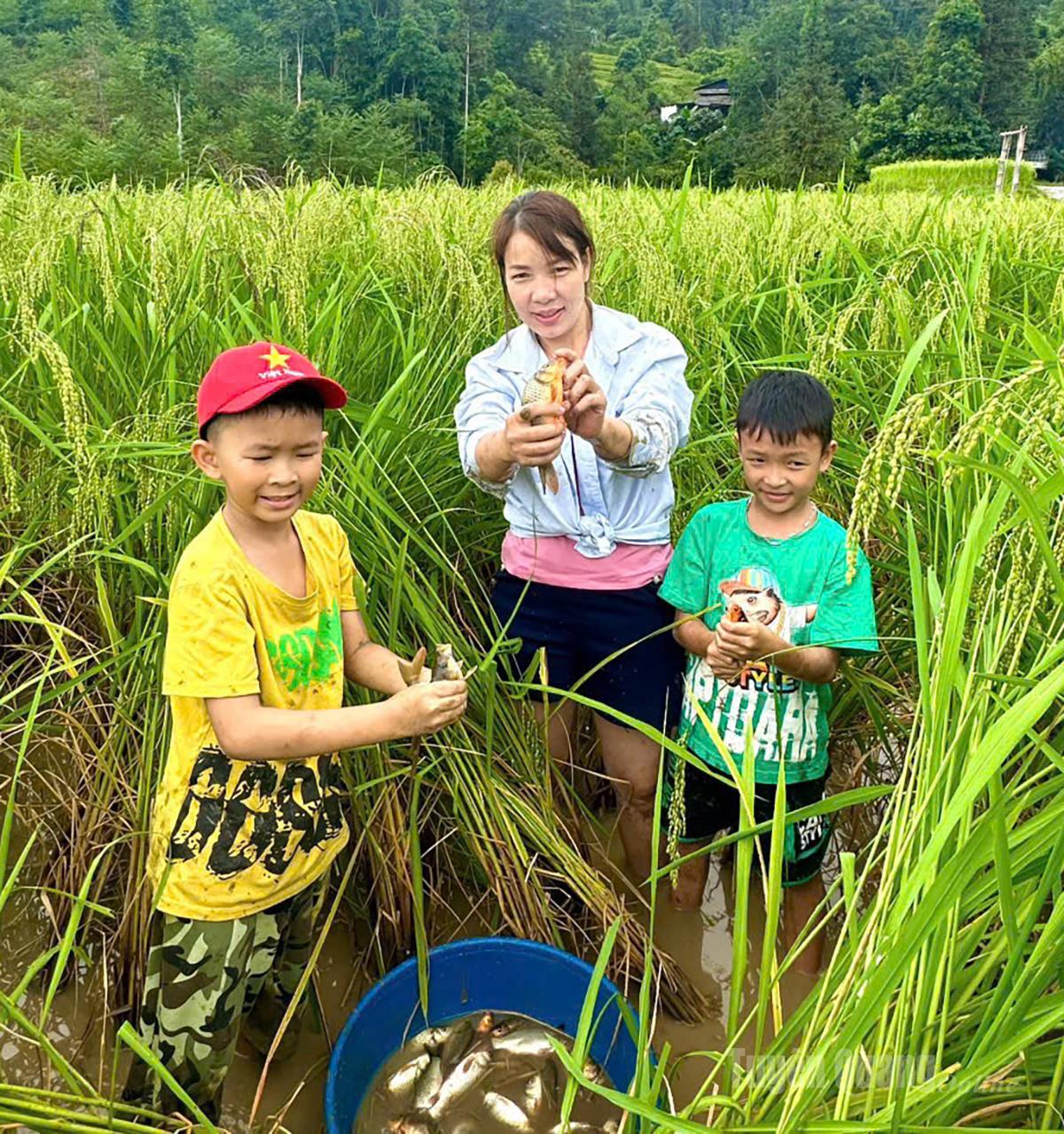Agri-tourism elevates rural economy
Many localities in the province are innovating their agricultural production models by linking them with tourism to increase farmers’ incomes. This approach not only helps boost agricultural product consumption but also offers visitors opportunities to experience the daily life, culture, and nature of Tuyen Quang, contributing to rural economic growth.
 |
| Tourists experience pear picking at Mac Cop Homestay, Hong Thai commune. |
In Thong Nguyen commune, the Binh Minh Homestay run by Trieu Mui Nai has become a popular destination during the ripe rice season. With 11 guest rooms, the homestay welcomes hundreds of visitors each month to join eco-friendly activities such as catching carp in the fields, picking tea, and trekking. In September alone, the homestay earned more than VND200 million. According to Vu The Phuong, Chairman of the Thong Nguyen Commune People’s Committee, Nam Hong Cultural Tourism Village now has 10 homestays that attracted nearly 1,600 visitors in September, generating total revenue of nearly VND800 million. Following its success, many other households have developed similar experiential tourism models, securing stable incomes.
 |
| The carp-catching experience in Thong Nguyen commune attracts many visitors. |
In Hong Thai commune, Mac Cop Homestay, owned by Ban Thi Thuong, is a famous check-in spot where visitors can enjoy the pear and plum blossoms every spring. By expanding her orchards and building a hygienic livestock area to serve tourists, the homestay now generates an annual income of VND600 - VND700 million. Thuong’s startup story demonstrates that the combination of agriculture and tourism not only helps locals increase their income but also contributes to preserving traditional cultural values.
According to Le Van Tu, Chairman of the Hong Thai Commune People’s Committee, such models are creating a positive ripple effect as more households join tourism-related services. This has gradually formed a local value chain linking production, services, and on-site consumption, promoting economic diversification and sustainability.
In fact, agricultural tourism models like these are opening a new, effective direction for rural economic transformation in the province. When properly developed, they can become the key to building a modern, high-value agricultural sector that fosters tourism growth and strengthens community connections.
My Ly





READER COMMENTS